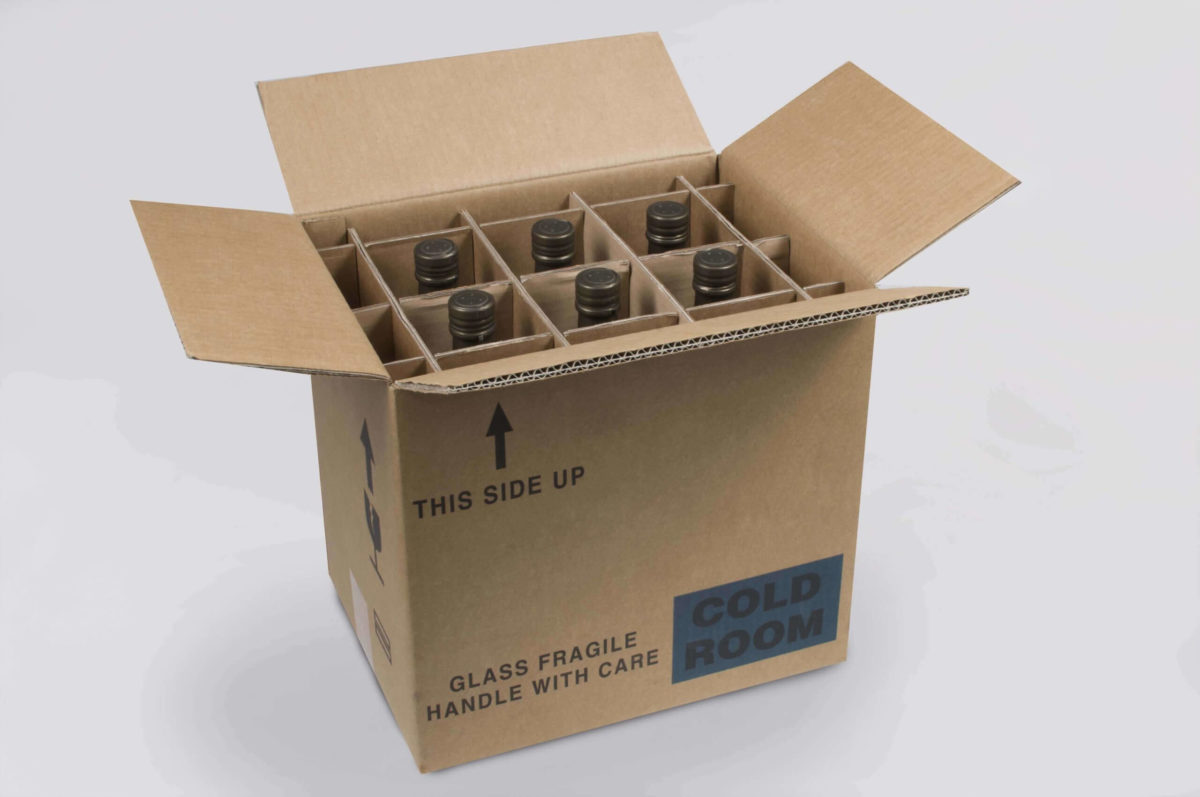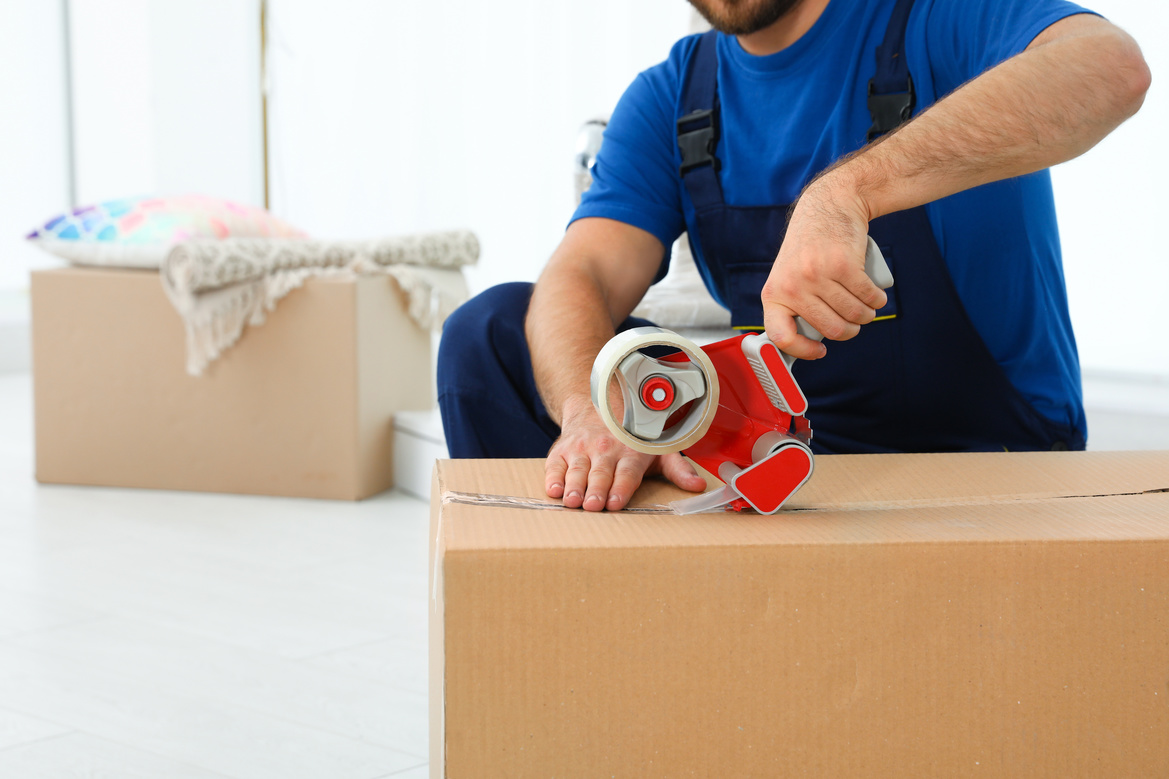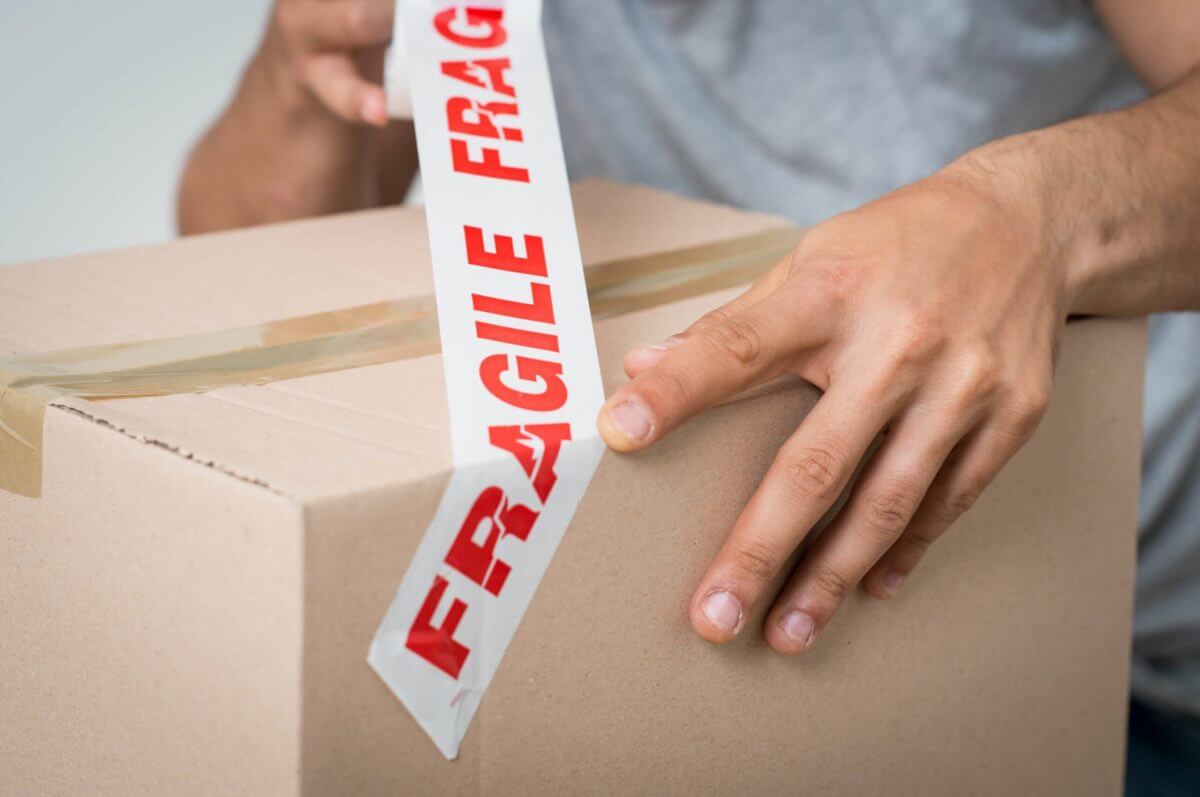Make sure to use cushioning materials to wrap each bottle, provide padding between them, and choose sturdy boxes with divider inserts to keep the bottles separated. Once the bottles are safely packed, label the boxes as fragile and indicate which side should be up during transport. In the end, secure the box with packing tape for added strength. If you’re concerned about the well-being of your precious collection when relocating, don’t hesitate to hire cross-country movers for expert handling.
Keep Calm and Wine On: Tips on How to Pack Wine Bottles for Moving
For all wine lovers, ensuring their wine collection stays intact during the relocation is essential. Learning how to pack wine bottles for moving is not only important for protecting your investment and the rest of your belongings, but it also ensures you can enjoy your favorite wines once you arrive at your new home. Luckily, all you have to do is follow this simple guide – and your wine bottles will stay intact.


Learn How to Pack Wine Bottles for Moving Without Losing Precious Liquor
Wine bottles are delicate and can easily break during transport if they are not properly packed. And if something does happen, losing a bottle of wine will not only mean losing your investment in that bottle, but it can also ruin your other belongings.
Additionally, wine bottles are valuable and often sentimental items, especially for collectors or those with a special bottle saved for a special occasion. That is why losing or damaging a bottle of wine during a relocation to a new home can be a disappointing and emotional experience.
Therefore, learning how to pack wine for shipping cross-country is essential for protecting your investment and ensuring enjoyment upon arrival at the new home – that is, if you don’t plan to get packing services and let professional long-distance movers do what they know best.
Moving Cross-Country With Fragile Items Means Gathering the Correct Materials
Packing wine bottles and other delicate items requires the right tools to ensure their safe transport. Here are some of the packaging materials you should gather before packing fragile items for a long-distance relocation:
- Cardboard boxes – sturdy boxes, preferably with double-layered walls to provide added protection,
- Bubble wrap – essential for wrapping fragile items and providing cushioning,
- Packing paper – great for wrapping items and filling any gaps,
- Tape – high-quality tape that can securely seal the boxes,
- Foam peanuts – can be used to fill any gaps in the boxes to prevent items from shifting during transport.
Choose the Right Wine Moving Boxes
When you want to relocate your collection damage-free, choosing the right wine moving boxes is crucial. First of all, there are different-sized boxes that you’ll be presented with, so it’s important to choose one that is appropriate for the number of bottles you need to ship. Boxes specially designed for wine bottles can typically fit between 6 and 12 bottles, but there are larger options available.
Moreover, glass bottles, especially when full, are heavy, so it’s essential to choose a box that is sturdy enough to hold the weight without collapsing. Look for boxes made of double-layered cardboard or reinforced with plastic inserts. Additionally, it’s best to look for cardboard that comes with divider inserts to keep the bottles from touching and knocking into each other.


Use Cushioning Materials for the Best Long-Distance Moving Results
Using a combination of cushioning materials, such as bubble wrap, packing paper, and foam peanuts, can help ensure that your fragile items are protected on their way to your new home. Proper cushioning will prevent items from shifting, knocking into each other, or breaking during transport – which is the ultimate goal for when you move to a new city and want to transport your wine collection.
How to Transport Wine With the Help of Cushioning?
All you have to do in order to transport wine with the help of cushioning is to fill any gaps with cushioning materials like bubble wrap or packing paper. Once the box is sealed, feel free to shake it a bit to see if the bottles are shifting – if they do, that means more cushioning is needed.
Packing Wine Bottles – The Process
Your beloved wine collection requires a bit more of your attention than non-breakable items. Given the potential value or sentimental weight of a wine collection, it’s crucial to learn the proper way to box them up when organizing a relocation. Take a look at this simple, step-by-step guide and ensure that they remain intact and secure throughout the journey.
Wrap Each Bottle in Bubble Wrap or Foam Sleeves
Start by wrapping each bottle individually in bubble wrap or foam sleeves. For added protection and the best result, it’s best to combine different packaging materials. Place a layer of bubble wrap on a flat surface, position the wine bottle in the middle, and roll it until completely covered, taping the ends securely. Then, use foam sleeves for added protection.
Add Cushioning Materials as Needed
Once all the bottles are securely placed in the divided box, it’s essential to add cushioning material to any remaining gaps or spaces between the bottles to prevent movement. Old newspapers can work well for this purpose, but keep in mind that the ink can damage your collection. Consider adding cushioning to the top and bottom of the box, especially if you’re stacking other items on top of the wine box.
Secure the Box With Packing Tape
The quality tape will keep the box closed and prevent the contents from shifting or falling out during transport. Additionally, tape adds extra strength to the box, helping to prevent it from breaking or collapsing. By sealing the box with tape, you can also protect the contents from moisture and other weather conditions during transport. That is why packaging tape is one of those relocation essentials that will allow your bottles to arrive safely at your new destination.


Labeling the Boxes – How to Pack Wine for Shipping Like a Pro
Proper labeling ensures that the wine bottles are handled with care by you, your cross-country movers, or anyone else assisting in the relocation process. When labeling wine boxes, it’s important to mark them as fragile to alert the movers from a long-distance moving company to handle them with care. Additionally, labeling the boxes with the contents makes it easier to identify them when unpacking after the move.
Remember that indicating which side of the box should be up during transport is also important, as wine bottles should be transported upright. If there are any special instructions for handling the wine bottles, such as keeping them at a certain temperature, make sure to include these on the label as well.


Additional Tips for Wine Bottle Packing
Avoid Extreme Temperatures During Transit
One of the main factors that can deteriorate a bottle of wine during transportation is extreme temperature fluctuations. Wine is highly sensitive and can easily spoil if exposed to high temperatures, freezing conditions, or drastic temperature changes. The ideal temperature range for strong wine, according to Winewear, is between 52 and 65 degrees Fahrenheit, with a preference for cooler conditions to prevent oxidation.
To maintain an ideal temperature during transit, consider using insulated boxes or wine-specific packing materials. Additionally, you should also avoid scheduling a relocation during extremely hot or cold months.
Pack Wine Bottles Separately From Other Items
To minimize the risk of breakage, always box up wine bottles separately from other possessions. It will protect not only your collection but other belongings on your household inventory list, as well.
Check if the Cross Country Moving Company Has Alcohol Shipping Policies
Not all cross-country moving companies are equipped or licensed to transport alcohol, especially across state lines. Before you decide on a specific cross-country moving service, ensure the company is well-versed in alcohol shipping laws and can legally transport your collection. Ask whether they possess the necessary permits, have experience handling wine shipments, and understand the intricacies of wine transportation. A reputable company will be open and transparent about its capabilities and provide you with a detailed list of items movers won’t move.
Packing Fragile Items Is Stressful – Call Cross-Country Movers for Help
Delicate and breakable goods require special care and attention to ensure they arrive at their destination without any damage, which can sometimes be overwhelming. Getting reliable cross-country moving services can help you deal with the relocation stress that comes with packaging fragile items and provide peace of mind during your move to a new state.
Note that long-distance movers have experience in dealing with different types of household goods and can provide the right materials and techniques to ensure that your items are properly protected during transport.
By hiring movers and booking long-distance moving services, you can save the time and energy that you would have spent on organizing a packaging process and dealing with delicate items on your own. With help from a reliable mover, such as Cross Country Moving Company, you can focus on other tasks on your to-do list while the movers take care of boxing up and transporting your fragile items.
Packing
Our expert moving teams are trained to ensure the safety of your personal belongings.

Auto Transport
Cross Country Moving Company is the most trusted name in auto industry in the country.

Storage
Cross Country Moving Company is the most trusted name in auto industry in the country.
You Can Do So Much if You Follow the Right Wine Shipping Steps
By following the right relocation tips, you can ensure that your precious wine collection arrives at its destination without any damage. We provided you with a few key steps that can make all the difference in ensuring the safe transport of your wine bottles. However, when you wish to have complete peace of mind, let the experts from the Cross Country Moving Company handle all of your fragile belongings, including wine bottles. Contact us as soon as possible, book your move, and prepare for a worry-free relocation experience.
Frequently Asked Questions About How to Pack Wine Bottles for Moving
Can I Pack Wine Bottles in Regular Cardboard Boxes for Moving?
While it’s possible to ship wine bottles in regular boxes, it’s not recommended. Regular cardboard boxes are not designed to withstand the weight and fragility of wine bottles, which can lead to breakage during transport. To ensure the safe transport of your wine bottles, it’s recommended to use sturdy boxes with divider inserts and to properly cushion each bottle.
How Many Bottles Can I Pack In One Box?
The number of wine bottles you can place in one box depends on the size of the box and the size of the wine bottles. Most wine boxes hold between 6 and 12 bottles.
Should I Pack Wine Bottles Vertically or Horizontally for Moving?
When packaging wine bottles, it’s best to store them vertically. This is because wine bottles are designed to be stored upright to keep the cork moist and prevent air from entering the bottle, which can spoil the wine.
Do I Need to Individually Wrap Each Bottle Before Packing?
Yes, it’s recommended to individually wrap each bottle. Wine bottles are delicate and can easily break during transport, so wrapping them individually will provide extra protection against any impacts or movements. Wrapping each bottle also helps to prevent the bottles from knocking into each other and potentially breaking.
What Materials Should I Use to Pack Wine Bottles for Moving?
Here are some recommended materials to use:
- Bubble wrap,
- Packing paper,
- Foam peanuts,
- Boxes with dividers
Can I Use Bubble Wrap to Pack Wine Bottles for Moving?
Yes, bubble wrap is an excellent material to use when packaging wine bottles. It provides a layer of cushioning that helps protect the bottles during transport. When packaging wine bottles, it’s recommended to wrap each bottle individually with bubble wrap, making sure to cover the entire bottle, including the neck and bottom.
How Do I Label the Boxes Containing Wine Bottles for Moving?
Wine bottles are delicate, so it’s important to mark the boxes as fragile to alert the movers to handle them with care. Labeling the boxes with the contents, on the other hand, makes it easier to identify them during transport and unpacking.
Since these bottles should be transported upright, make sure to indicate which side of the box should be up during transport. If there are any special instructions, such as keeping them at a certain temperature, make sure to include these on the label.
Can I Ship Wine Bottles Through a Shipping Company for Long-Distance Moves?
Yes, it’s possible to ship wine bottles through a shipping company, but there are some important considerations to keep in mind. Some shipping companies may not allow the shipment of wine bottles due to legal restrictions or safety concerns. It’s important to check with the cross-country relocation company to ensure that they allow it and to understand their specific requirements and guidelines.
What Precautions Should I Take When Packing Wine Bottles for Long-Distance Moves?
Here are some important precautions to consider:
- Use sturdy wine relocation boxes,
- Use divider inserts to keep the bottles separated,
- Wrap each bottle individually,
- Label the boxes,
- Consider climate-control shipping to prevent damage from temperature changes.
How Should I Store Wine Bottles During a Long-Distance Move?
Wine bottles should be stored upright and at a cool and consistent temperature to prevent spoilage. Avoid storing them in areas that are too hot or too cold. You should also learn some packaging tips on how to box them up properly – use sturdy boxes and cushioning material and wrap bottles separately.







